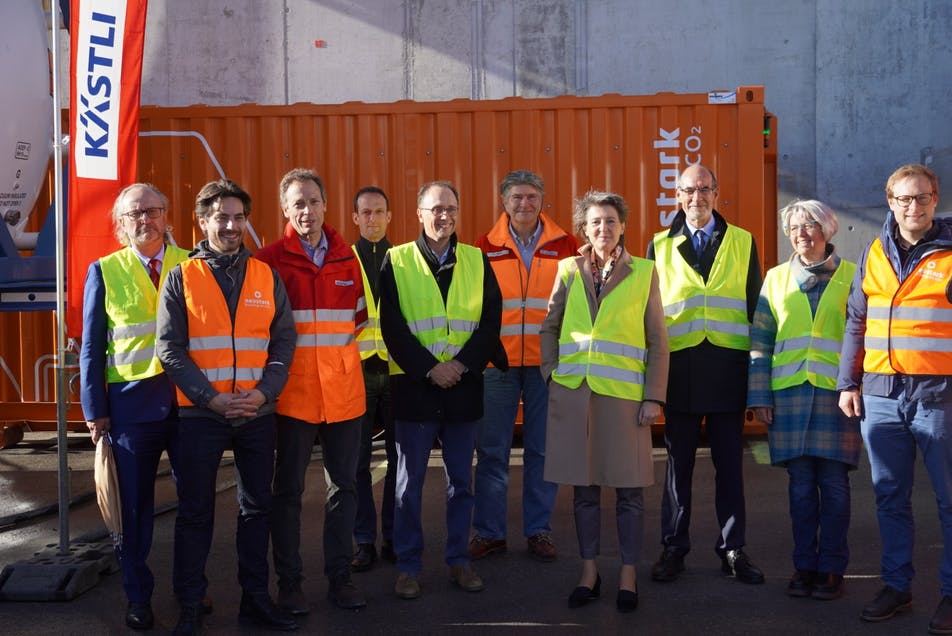Our CEO Matthias Holenstein accompanied Federal Councillor Sommaruga and a delegation of politicians on a visit to ETH spinoff Neustark. The great interest in negative emission technologies underlines the importance of the Swiss Carbon Removal Platform we recently launched.
Negative emission technologies (NET) are processes that permanently remove climate-damaging greenhouse gases from the atmosphere. CO2 emission reductions are the first priority in the race against climate change. But to achieve net zero despite unavoidable emissions, for example from agriculture, NETs will be needed. To be able to use them sustainably on a large scale, rapid investments are needed in the development and expansion of NET.
Thanks to innovative research projects and companies in the field of NET, Switzerland is currently leading in the development and application of some NET processes, such as the production of carbon-negative cement or the direct capture of carbon from the air. It is impressive to see that the topic of negative emissions is now also receiving attention at the level of the Federal Council. On November 2, 2021, Federal Councillor Sommaruga visited the ETH spinoff Neustark with a delegation from politics, administration and associations. Neustark removes CO2 from the atmosphere or directly from exhaust gases and stores it permanently in recycled concrete. This makes Neustark a climate protection pioneer in the greenhouse gas emission-intensive construction industry.
As a representative of the Swiss Carbon Removal Platform, Matthias Holenstein, Managing Director of the Risk Dialog Foundation, accompanied the delegation of the Federal Councillor. He emphasized the importance of relying on a diverse and innovative portfolio of approaches and technologies when expanding negative emissions. However, further development, market introduction and scaling of these approaches face many challenges, including risks or undesirable effects. In addition to funding research and development, crucial issues include the certification of negative emissions and the establishment of functioning logistics for CO2 captured from the air – for example, for the transport of CO2.
Last but not least, the public must be informed about the potentials, advantages, disadvantages and possible risks of the different processes, and a broad discourse about corresponding uncertainties must be initiated – one of the reasons why the Risk Dialogue Foundation established the Swiss Carbon Removal Platform with stakeholders from research, politics, administration, business and civil society.

